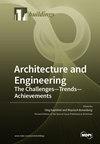Feasibility Study of Steel Derailment Containment Provisions through Quasi-Static Experiments
IF 3.1
3区 工程技术
Q2 CONSTRUCTION & BUILDING TECHNOLOGY
引用次数: 0
Abstract
Railway derailments present a safety hazard, carrying the potential for severe consequences for both human lives and the economy. Implementing derailment containment provisions (DCPs) near the track centerline is essential for mitigating risks in operating high-speed rail (HSR) while providing significant advantages for the large-scale upgrade of existing railway infrastructure. Therefore, this paper investigated the feasibility of a DCP system made of steel through quasi-static experiments, aiming to enhance safety in HSR operations. Initially, single anchor tests were conducted to assess its capacity to withstand applied loads, prevent the pullout of steel anchors, and avoid the local rotation of the steel frame. Then, full-scale steel DCP systems were manufactured and tested for quasi-static load at different locations, including the mid-anchor, the mid-span, and the end-anchor. The relationship between applied load and displacement, along with the initial stiffness of the DCP specimens, was discussed. The findings revealed that the single anchor can withstand an applied load of up to 197.9 kN. The DCP specimen maintained structural integrity at the 207 kN target load under all load scenarios, showing a maximum displacement of 8.93 mm in the case of applied load at mid-span. Furthermore, the initial stiffness of the DCP systems was 1.77 to 2.55 times greater than that of a single anchor, validating a force-bearing coordination mechanism among neighboring anchors and the substantial impact of the applied load positions on their stiffness.通过准静态实验研究钢制脱轨防护装置的可行性
铁路脱轨是一种安全隐患,有可能对人类生命和经济造成严重后果。在轨道中心线附近实施脱轨防护装置(DCP)对于降低高速铁路(HSR)运营风险至关重要,同时也为现有铁路基础设施的大规模升级提供了巨大优势。因此,本文通过准静态实验研究了钢制 DCP 系统的可行性,旨在提高高铁运营的安全性。首先进行了单锚试验,以评估其承受外加荷载、防止钢锚拉出和避免钢架局部旋转的能力。然后,制造了全尺寸的钢制 DCP 系统,并在不同位置(包括中锚、中跨和端锚)进行了准静态荷载测试。研究讨论了外加荷载与位移之间的关系,以及 DCP 试样的初始刚度。研究结果表明,单锚可承受高达 197.9 千牛的外加荷载。在所有荷载情况下,DCP 试样都能在 207 kN 目标荷载下保持结构完整性,在跨中施加荷载的情况下,最大位移为 8.93 mm。此外,DCP 系统的初始刚度是单个锚固件的 1.77 至 2.55 倍,验证了相邻锚固件之间的受力协调机制以及施加荷载位置对其刚度的重大影响。
本文章由计算机程序翻译,如有差异,请以英文原文为准。
求助全文
约1分钟内获得全文
求助全文
来源期刊

Buildings
Multiple-
CiteScore
3.40
自引率
26.30%
发文量
1883
审稿时长
11 weeks
期刊介绍:
BUILDINGS content is primarily staff-written and submitted information is evaluated by the editors for its value to the audience. Such information may be used in articles with appropriate attribution to the source. The editorial staff considers information on the following topics: -Issues directed at building owners and facility managers in North America -Issues relevant to existing buildings, including retrofits, maintenance and modernization -Solution-based content, such as tips and tricks -New construction but only with an eye to issues involving maintenance and operation We generally do not review the following topics because these are not relevant to our readers: -Information on the residential market with the exception of multifamily buildings -International news unrelated to the North American market -Real estate market updates or construction updates
 求助内容:
求助内容: 应助结果提醒方式:
应助结果提醒方式:


